Hi, my name is Lauren Palena, and I spent six weeks during my clinical year of veterinary school as Fossil Rim’s veterinary preceptor. I will be graduating veterinary school from the University of Pennsylvania in May 2022. I have always wanted to work in conservation medicine, previously having worked at Six Flags Wild Safari and volunteered at wildlife centers. Being at Fossil Rim has been an amazing opportunity and has renewed my passion for conservation medicine. The knowledge I have gained in these few weeks has been invaluable!
Today I would like to discuss giraffe anesthesia. Giraffe are not routinely anesthetized unless there is a medical concern. This is because giraffe are at a higher risk of anesthetic complications. One of the giraffe at Fossil Rim, Nyla (pictured), has a history of abnormal hoof growth and requires routine trimming of her irregular hooves.
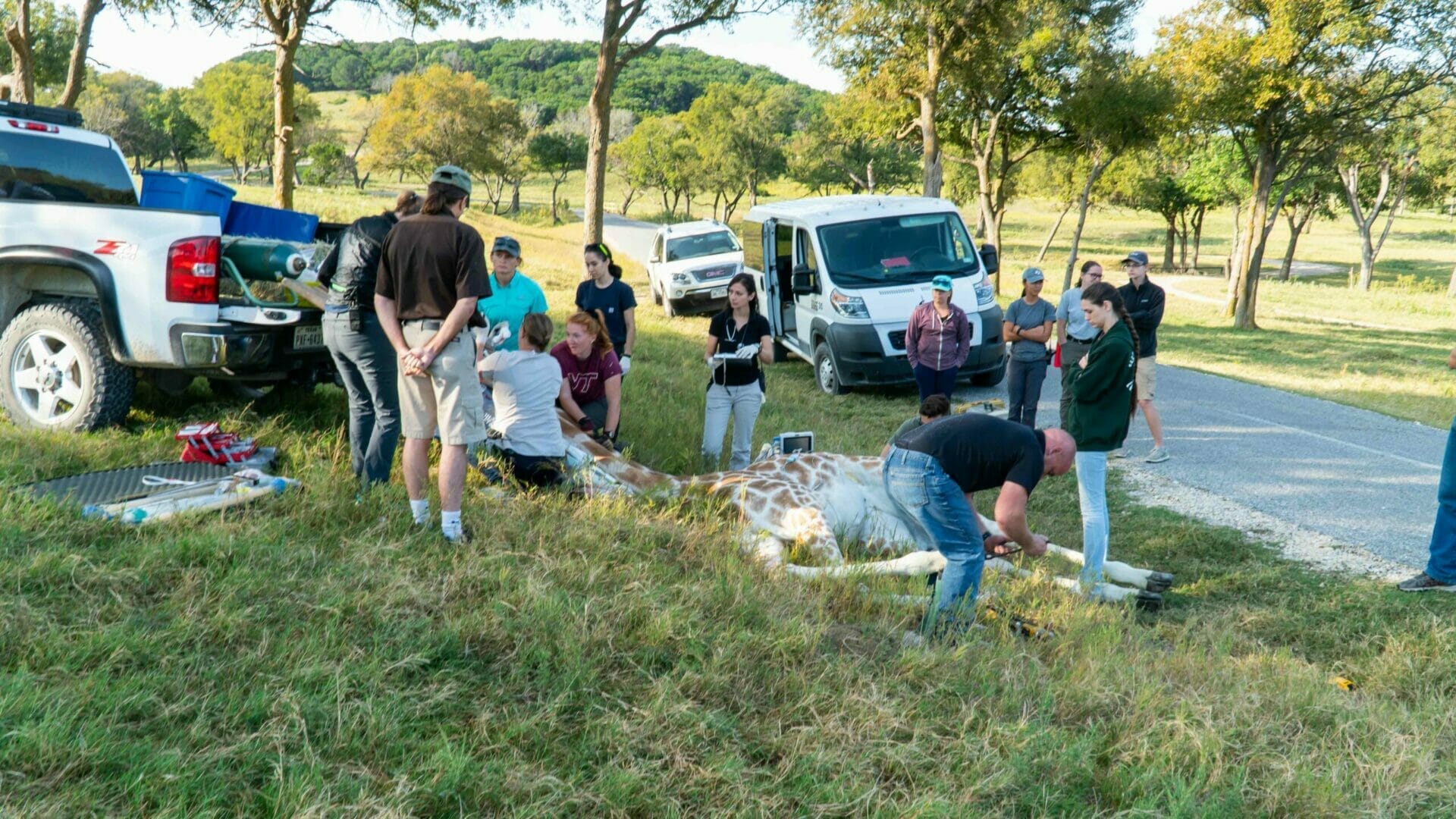
In this blog post, I will discuss why anesthesia is a big deal for giraffe.
To start, because of their size, giraffe are not easy to move. They can lay down in a dangerous location and are at risk of serious self-induced trauma. If there is poor footing, a giraffe can stumble, trip, or splay. Their long legs can also be dangerous to the staff. Similarly, their long neck acts as a lever arm if not controlled, which can be a danger to staff and the animal.
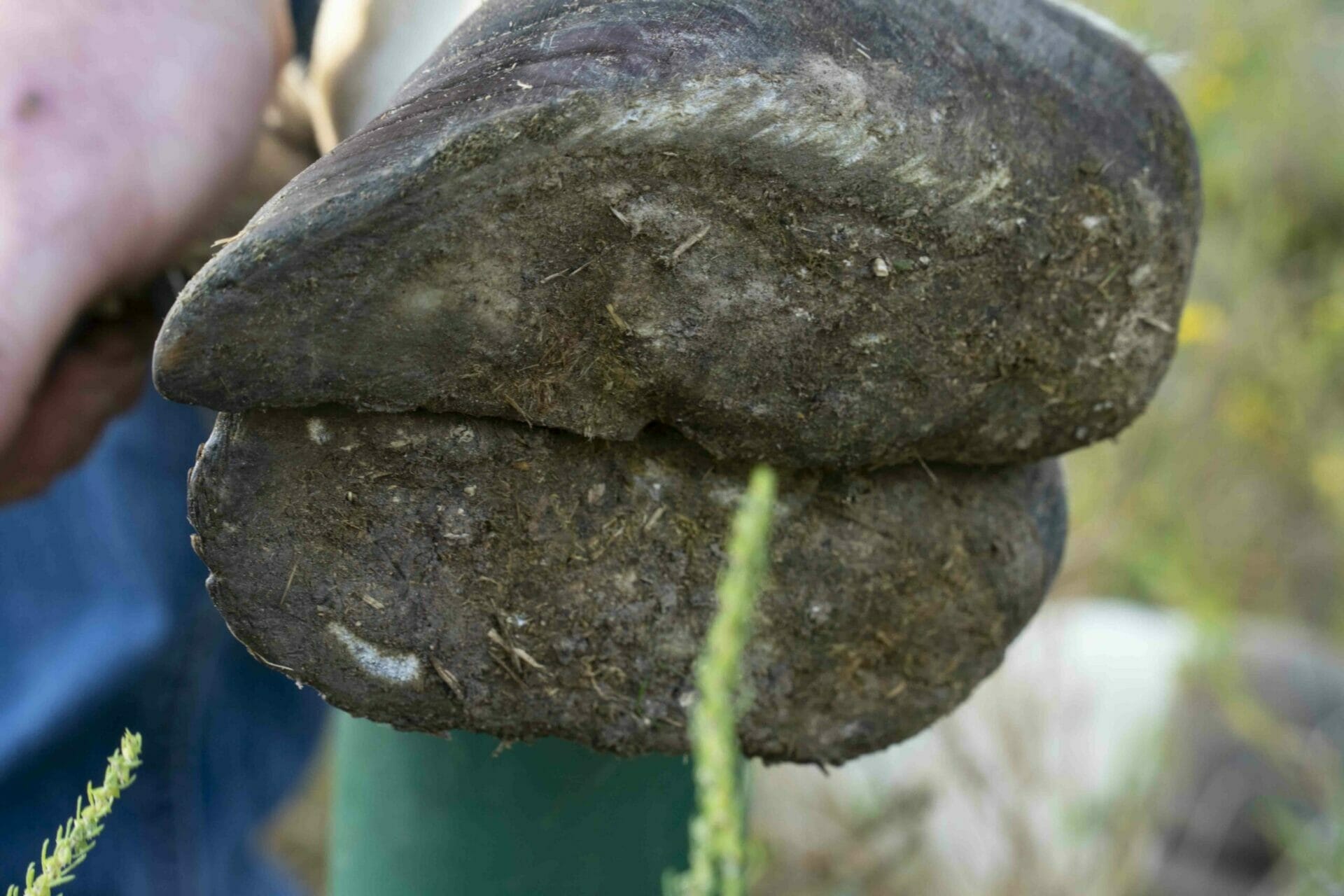
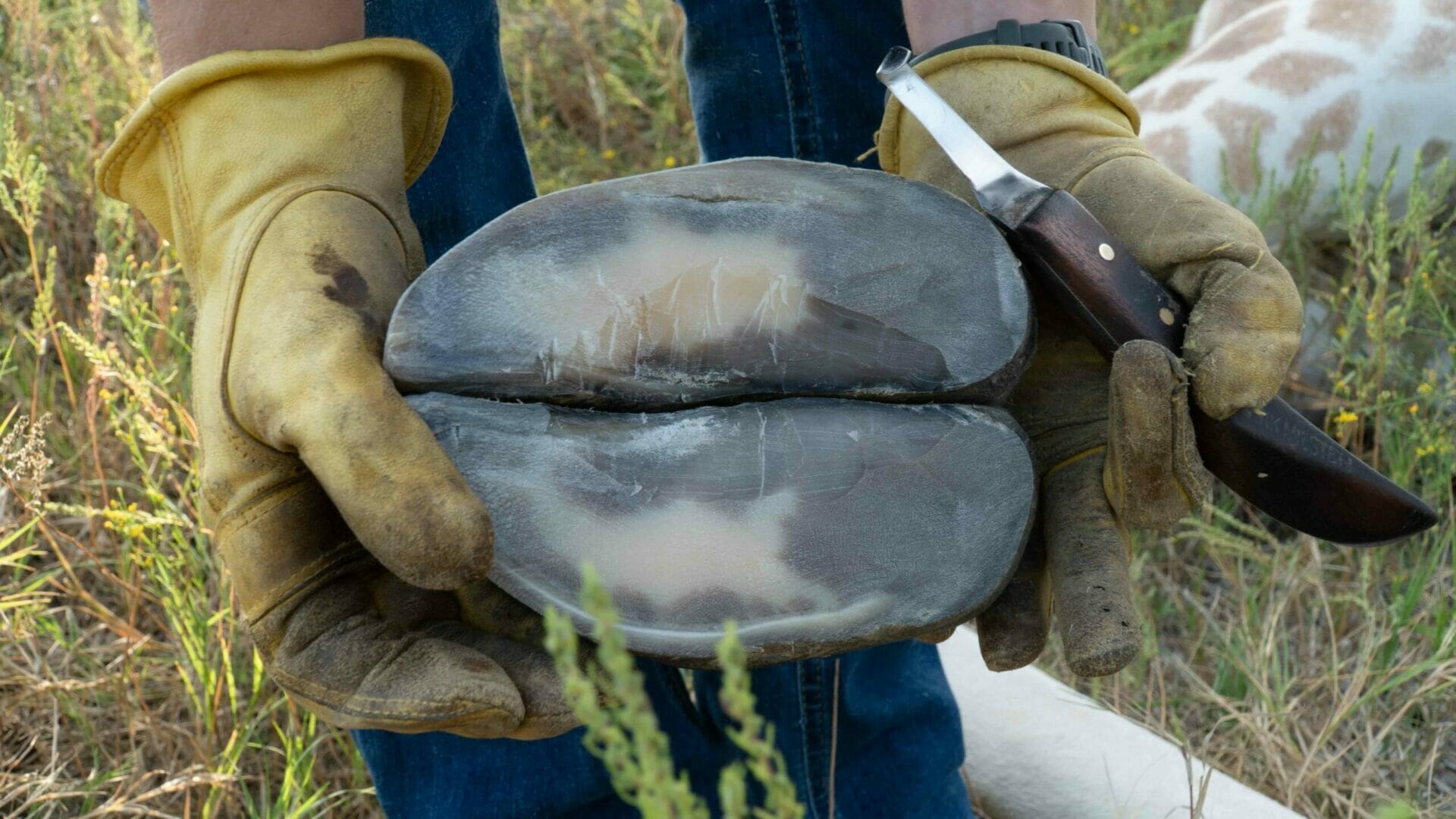
Their thick skin makes giving medications and monitoring anesthesia difficult. For example, it is hard to listen to their heart, so a vessel in the tail is palpated to feel the pulse. This is why the Nyla’s vitals are being taken from the hind end (pictured).
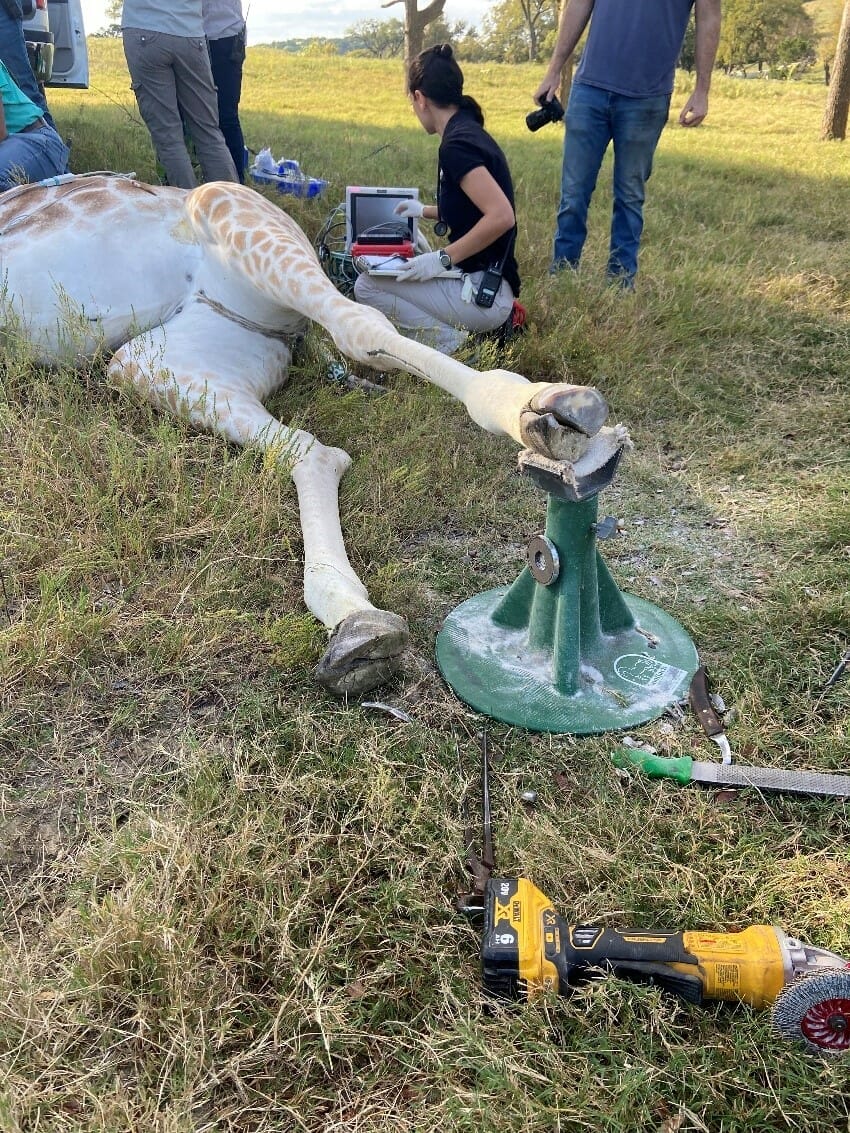
Ventilation assistance is important especially since some drugs used for immobilization cause respiratory depression. Therefore, the veterinary staff places a tube down the animal’s trachea in order to be able to deliver more oxygen.
Interestingly, their neck muscles need to be massaged throughout the immobilization, as neck cramps can be fatal! Giraffe also have a tendency to regurgitate while immobilized, risking food material and bacteria getting into their lungs which can also be fatal. As you can see, the neck is kept straightened and propped up above the body for these reasons.
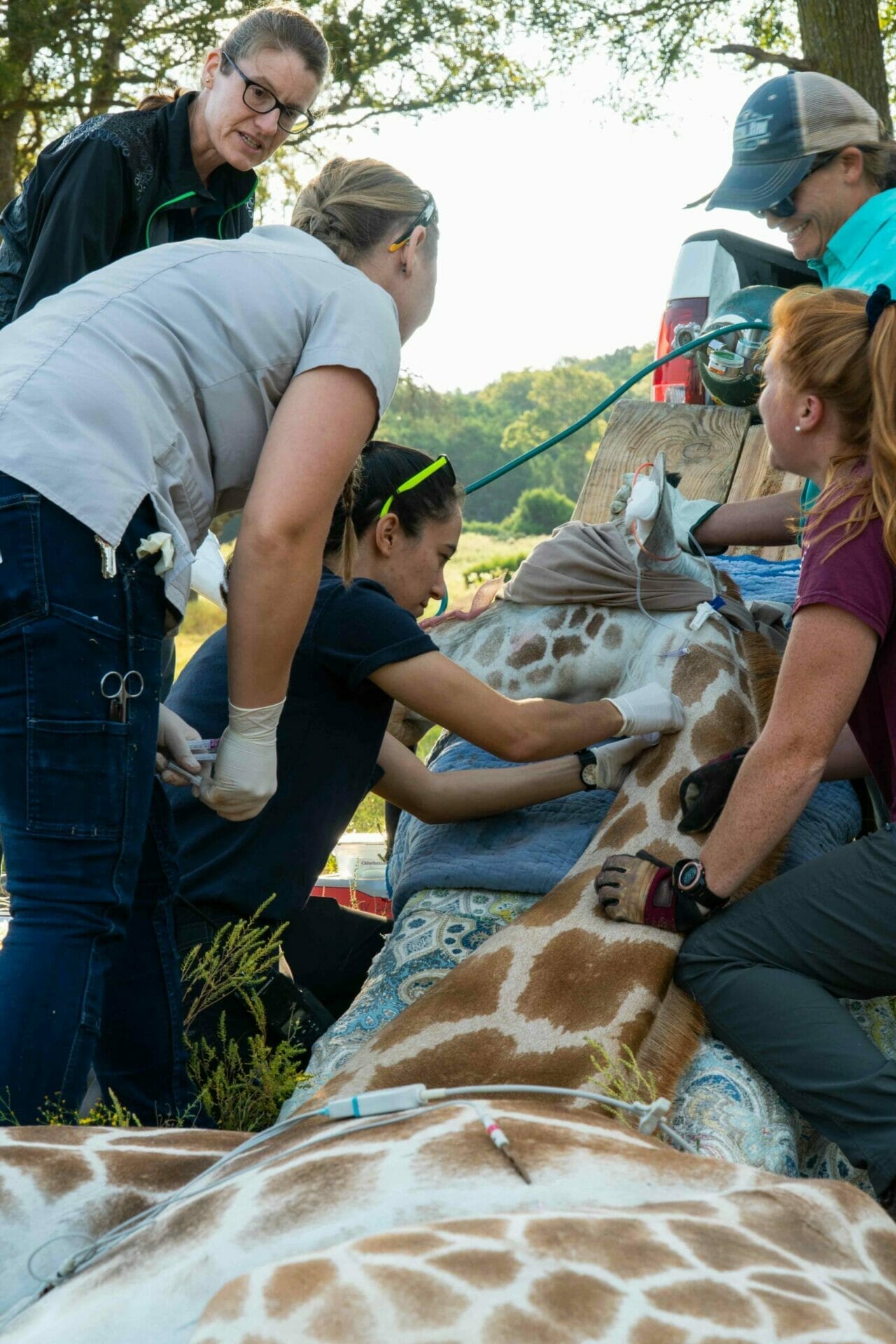
Environmental temperature is also an important factor, as giraffe can rapidly become too cold or too warm. Their temperature, heart rate, and respiratory rate need to be monitored closely.
Thank you for reading and I hope that you are able to visit the giraffe and all of the animals at Fossil Rim!
-Lauren Palena, Veterinary Preceptor

